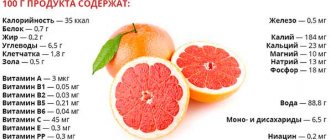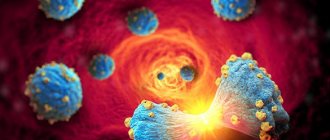Sweet gifts for the New Year are an integral attribute of the holiday program. Moreover, these gifts shower on children as if from a cornucopia. In reality, everything is far from so joyful, because kids can experience an overdose of sweets.
Sweets are undoubtedly delicious. But it is also very harmful. Especially when children are given too much of it. New Year in this sense is a dangerous holiday, because various gifts with sweets, chocolates, waffles and other carbohydrates are distributed to children in huge quantities. Due to their age, children cannot cope with such amounts of glucose, and they begin to have serious health problems. Tatyana Butskaya, pediatrician, head of the all-Russian public movement “Council of Mothers”, author of books on pregnancy and motherhood, told AiF.ru about what an overabundance of sweets can lead to for children during the holidays and what alternatives can be found
How to convince a child not to eat a lot of sweets from New Year's chocolate sets? More details
The harm of sweets
Sweets (sweets, cakes, chocolate and other sweets) are easily digestible or, in other words, simple carbohydrates. They are quickly absorbed and digested and just as quickly increase blood sugar levels.
“Fast” carbohydrates supply glucose to the body. It is needed for brain function. However, if there is too much of it, it is fraught with the development of increased excitability, allergies, obesity, caries, and diabetes. Excess sweets lead to problems in the liver and have a detrimental effect on healthy intestinal microflora, which, as is known, plays a significant role in strengthening general immunity.
Article on the topic
New Year's sweets. What kind of gift can you give to children?
Like all nutrients we consume, fast carbohydrates have recommended intakes and should be followed. In an adult's diet there should be no more than 10% of them, and in a child's menu - even less: about 5%.
in the diet of young children (up to 3 years old) . But adults ignore this taboo and buy sweets, chocolate and other sweets for children. According to statistics, already at 2-3 years old, the vast majority of children eat sweets every day. As an excuse, some parents say that they give their children sweets so as not to leave the brain without food. But I will hasten to dissuade them. If your child’s diet includes pasta, cereal, and fruit, you don’t have to worry: the body will get as much glucose as it needs from more complex carbohydrates.
At 3-6 years old, a child’s body can cope with 20 g of sugar without consequences. To clarify, we are talking not only about granulated sugar, but also about other artificial sugars. Many parents, when buying sweets for their child, do not realize that molasses, fructose, maltose, corn sweetener, caramel, honey, panocha, cane juice, malt, syrups are the same sugar. Perhaps this is why children consume sugars three times more than normal.
At 7-11 years old, it is permissible to consume 24 g of sugar, and at 11-18 - 30 g.
Mechanism of development of diabetes mellitus
The first type of disorder occurs acutely: the pancreas stops producing insulin in the required volume and the glucose entering the blood is not absorbed. This condition is manifested by characteristic symptoms:
- sudden weight loss;
- heavy sweat;
- frequent urination;
- constant thirst;
- loss of appetite.
Patients experience severe weakness and trembling in the body. Most cases of insulin-dependent diabetes have a genetic cause and develop in childhood or adolescence. Large amounts of simple carbohydrates in such people can cause glycemic coma. For a normal life, they need regular hormone injections and a special therapeutic diet:
- with a large proportion of lean protein: fish, meat, seafood;
- normalized content of complex carbohydrates: cereals, bread, vegetables.
Sugar ceases to be a food product for diabetics. In rare cases, it is prescribed as a means to eliminate hypoglycemia.
Type 2 disease is more insidious than insulin-dependent diabetes. It develops much more often, more slowly, and is chronic and almost asymptomatic. Its main victims are adults. Excess sugar and starch in the diet is a major risk factor. Combined with a lack of physical activity and frequent stress, an unhealthy diet can cause chronic diabetes in almost everyone.
For several years, people who become ill usually do not worry and continue to consume sweet baked goods, fast food, candies and other delicacies. A clear sign of trouble in the body is excess weight; most people do not consider it a problem.
Resistance - decreased sensitivity to insulin and high glucose levels are often detected by chance. If it is not compensated in time, after a few years complications develop against the background of excess sugar:
- impaired blood supply to the extremities and eyes;
- atherosclerosis;
- diseases of the cardiovascular system.
Over time, these conditions can lead to disability. The good news is that type 2 diabetes is easier to control. At an early stage, it can be successfully treated, and pathological changes in the body are inhibited.
What is more harmful: chocolate or waffles?
All sweet products - waffles, cookies, halva, gingerbread, chocolate, candy, etc. - can cause problems if abused. If there are too many of them in the diet, excess sugar is inevitable. I urge parents to be very careful about such purchases. They don't have to be daily. When choosing sweets, pay attention to the labeling. To understand how much sugar is in a product (not everyone indicates the exact amount), look at its order in the list of ingredients. The sooner you see it, the more of it there is.
Chocolate is okay, but no soda. Why a child should not be deprived of sweets Read more
Bad childhood habits
Simple carbohydrates: lactose, fructose, glucose, are found in many foods. But when entering the body along with natural food, they do not disrupt the endocrine functions of the pancreas and are successfully absorbed. The most famous carbohydrate concentrate is sugar. This product is popular due to its low cost and ease of use. A pleasant sweet taste makes any food much more attractive. Even babies understand this, eagerly devouring cereals, mixtures and juices flavored with sugar.
In the food industry, there are several directions for the development and production of various sugar-containing foods. People become familiar with confectionery and sweet drinks in the first years of life. Treats are not just food. This is entertainment, a way to brighten up troubles and worries, and lift your spirits. It is customary to give sweets, cakes and chocolate for the holidays, give them as rewards to children, lemonade, fruit “nectars” to quench thirst. A mug of coffee or tea with sugar for breakfast, lunch, dinner and every work break is also common.
Sugar is part of universal culture and is eaten in large quantities every day. To improve the taste, it is even added to semi-finished meat products, canned food and dietary products. It is not surprising that people perceive an excess of carbohydrates in the diet as the norm. No one considers people with a sweet tooth to be sick, unlike smokers and alcoholics. And in vain. After all, every extra candy or cake tests the strength of the endocrine system.
Symptoms of excess
The fact that a child eats too much sweets is primarily indicated by atopic dermatitis. The child develops a rash and his arms and legs begin to itch. Another reason to think about limiting sweets is tooth decay. After the New Year holidays, when a child is showered with candy and chocolate, it is very difficult to make an appointment with the dentist: everyone is having their teeth treated. And caries should never be ignored. For example, the persistent belief that caries on baby teeth is not so dangerous, because they will fall out anyway, is fundamentally wrong. Under these teeth are molars, so damage to baby teeth will lead to problems with permanent teeth. It would be a pity to lose teeth from childhood because of sweets.
Question answer
What sweets are the most harmful?
Omez 10 mg for heartburn
Omez 10 mg belongs to the group of drugs called proton pump inhibitors, which are used to treat heartburn4. The drug helps suppress the production of acid in the stomach. Omez 10 mg is recommended to be taken 30 minutes before meals so that it has time to reach the parietal cells of the stomach and block the work of the proton pump - the last stage of acid production. The maximum recommended course of treatment without consulting a doctor is 14 days4.
Omez 10 mg is available in a special aluminum strip, which protects the drug from the effects of environmental factors. Pillets (small granules containing the active substance inside) have three layers, two of which contribute to the full delivery of the active substance to the parietal cells. The drug undergoes 37 control tests. It is recommended to take 2 capsules of Omez 10 mg per day4.
The causes of heartburn after eating sweets are the excessive production of stomach acid. Omez 10 mg helps reduce the production of this acid, so it can be used to treat and combat heartburn and sour belching caused by sweets4.
Bibliography:
- I.G. Pakhomova. Heartburn: modern principles of examination and treatment of patients // RMJ. 2015. No. 21. pp. 1249–1252. https://www.rmj.ru/articles/gastroenterologiya/Izghoga_sovremennye_principy_obsledovaniyai_lecheniya…
- Ivashkin V.T., Maev I.V., Trukhmanov A.S., Baranskaya E.K., Dronova O.B., Zayratiants O.V., Sayfutdinov R.G., Sheptulin A.A., Lapina T. L.L., Pirogov S.S., Kucheryavyi Yu.A., Storonova O.A., Andreev D.N. Clinical guidelines of the Russian Gastroenterological Association for the diagnosis and treatment of gastroesophageal reflux disease. Ros journal gastroenterol hepatol coloproctol 2017; 27(4):75-95. (https://webmed.irkutsk.ru/doc/pdf/gerdru.pdf)
- Osadchuk A.M., Davydkin I.L., Gritsenko T.A., Khairetdinov R.K., Kurtov I.V., Danilova O.E., Rogozina L.A., Kosyakova Yu.A., Krivova S. .P. Heartburn syndrome. Current issues of pathogenesis, differential diagnosis and treatment // Modern problems of science and education. – 2022. – No. 5.; URL: https://www.science-education.ru/ru/article/view?id=26974 rel=”nofollow” (access date: 09.22.2020).
- Instructions for use of the medicinal product for medical use OMEZ®10 mg LP 00328 dated 07/11/17 Date of access 09/22/20.
Useful replacement
Of course, it’s better to take the trouble to find and select an adequate replacement. The best solution in this situation would be dried fruits. This is a great option. They are both tasty and healthy. Homemade baking is also a great way to minimize the amount of sugar in your child's diet. There are cookie recipes on the Internet that can be made with just one spoon of sugar.
In my opinion, this is the best thing you can offer a child. But many children can no longer imagine life without sweets, chocolate, cakes and other store-bought sweets. In this case, I recommend not establishing a total ban (it will only worsen the craving for sweets), but monitoring and limiting the amount of food eaten. Agree on a limit and “stretch” New Year’s gifts over several weeks or months. Feel free to participate in the destruction of sweet supplies yourself. Even if your child does not have an allergy, it can start from an excess of sweets. Some allergens (for example, chocolate) are characterized by a delayed type of allergic reaction. Stay alert.
What to feed a child with nausea and vomiting?
Many parents do not know what their baby’s diet should be if he is constantly vomiting. With repeated vomiting (especially in case of poisoning, when it is accompanied by diarrhea), the baby loses a lot of fluid, which threatens dehydration. It is necessary to give small portions of water, dried fruit compote, cooled herbal teas or rosehip decoction. Under no circumstances should you use sugary water or carbonated drinks for drinking - this can dramatically worsen the condition. Also, you should not let your child drink a lot of liquid at a time - this can provoke a new attack of vomiting. Source: E.O. Komarovsky Handbook of sensible parents. Part 2. Emergency care. Eksmo-Press, 2011
In each case, the doctor gives individual recommendations on the child’s nutrition, but the general principle is this: the load on the gastrointestinal tract should be reduced as much as possible. It is necessary to remove smoked, over-salted, fatty foods from the diet. Porridge with water, jelly, homemade compotes and crackers, steamed cutlets and vegetables - all this belongs to a gentle diet and will help the baby recover faster.
Medical doctors have extensive experience in treating gastrointestinal diseases in children. Advanced examination methods and qualified doctors will help you quickly identify the causes of nausea in a child and begin effective treatment.
Sources:
- Lilenko S.V. Motion sickness in children and adolescents: pathogenesis, symptoms, prevention and treatment // Russian Pediatric Journal. 2016; 19 (1):49-54. DOI 10.18821/1560-9561-2016-19 (1)-49-54
- E.O. Komarovsky “Handbook of sensible parents. Part 2. Emergency care." Eksmo-Press, 2011
The information in this article is provided for reference purposes and does not replace advice from a qualified professional. Don't self-medicate! At the first signs of illness, you should consult a doctor.
How to avoid nausea after eating?
If nausea occurs due to overeating, you just need to adjust your diet and regimen. What to do:
- Don't eat too much at one time. It is better to divide food into small portions - this way the food will be easier to digest.
- Do not eat a lot of fried, fatty, salty foods. This is a heavy meal that not every stomach can handle. The more often it is used, the more difficult it is for him to work.
- Do not engage in physical activity for the next hour after eating.
- Always check the expiration date of products to avoid poisoning.
In everyday life, contributing factors to overeating are:
- holidays and feasts with heavy fatty foods;
- a large amount of alcohol that needs to be consumed;
- lack of a full lunch at the workplace and a late, hearty dinner with a full stomach.
If the first reasons can be dealt with through willpower, then organizing lunch is more difficult. There is a little trick: carry light snacks with you not in the form of sandwiches, but thermoses with cream soup, fruits and vegetables.
Causes of sweet taste
A disorder in the digestive system can cause a sweet taste in the mouth.
The reasons for the change in taste in the mouth to a sweet taste are:
- Disorders of the digestive system. Occurs with gastritis and peptic ulcers, when there is an increased level of acidity. From the stomach, part of the processed food is thrown into the esophagus.
- Presence of Pseudomonas aeruginosa. This infection often affects the sinuses, causing congestion, difficulty breathing, and chest pain. Taste sensations are disturbed.
- Smoking. In the tongue receptors, with constant exposure to nicotine, the perception of taste changes.
- Poisoning with chemicals (pesticides).
- Pancreatitis. The development of pancreatitis is indicated by a persistent aftertaste in the morning and an unpleasant burning sensation in the stomach.
- Liver pathology.
- Impaired carbohydrate metabolism, overeating or eating a lot of sweets.
- A state of constant stress and tension. Inflammation of the facial or trigeminal nerve.
- Diabetes mellitus, in which a sweetish taste is formed in the mouth, additional symptoms appear: hunger, thirst.
- Dental problems, diseases of the nasopharynx: pharyngitis, tonsillitis, otitis media, sinusitis, caries, periodontal disease.
- When women become pregnant, functional changes occur throughout the body. Taste priorities also change.
- Respiratory tract infection.








